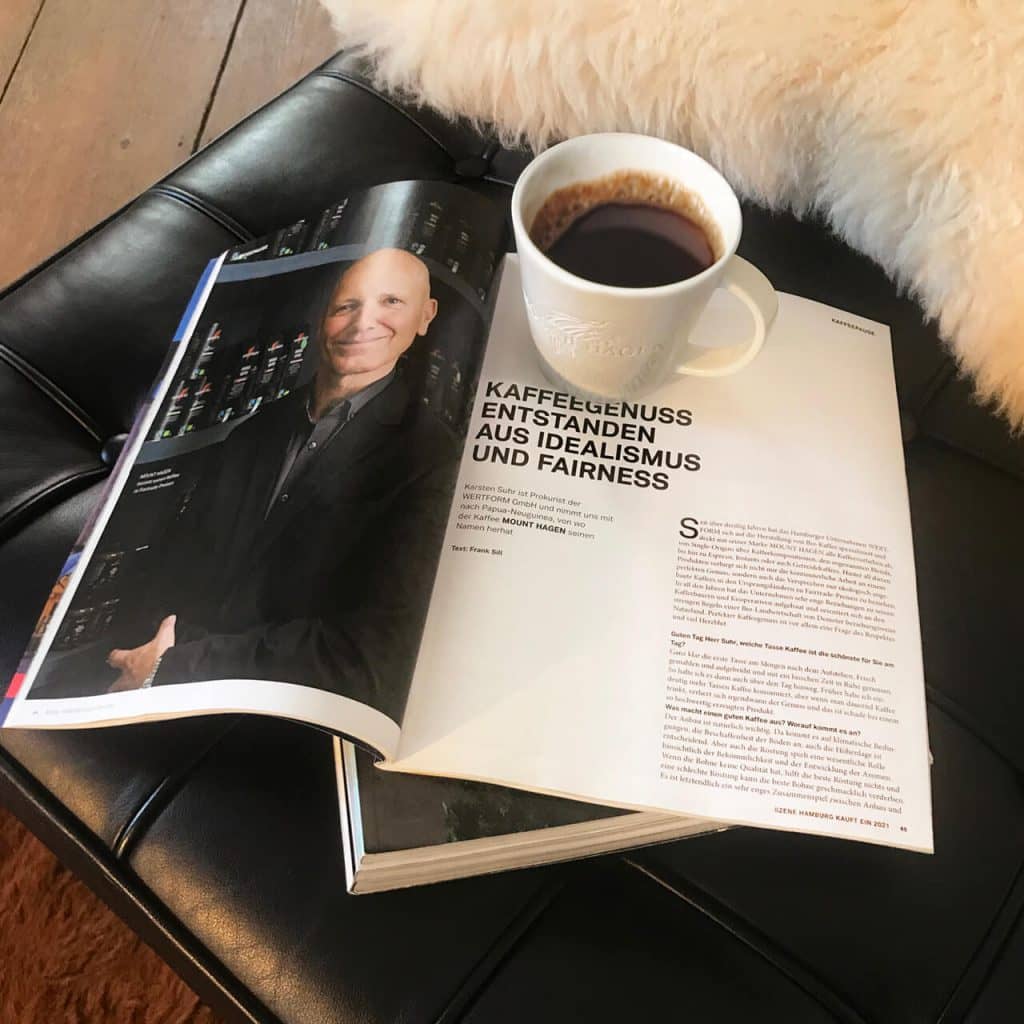The beautiful thing about good coffee is that you can taste just how much dedication went into making it – not just during brewing, but right from the very start. Join us as we cover coffee’s journey from raw to roast – all in its own sweet time.

Only really ripe (red) berries are picked by hand. Green berries would not be aromatic; black berries – in other words, overripe berries – would taste foul. Although a lot of experience is needed to recognize the optimum degree of ripeness, the time when the fruit is ready to harvest also depends on the respective climate and precipitation. But it’s worth all the effort – it forms the very basis of the coffee’s opulent aromas.
Straight after harvesting – and it has to be quick – the berries undergo wet processing. Here, they are poured into a water tank, washed several times, pulped, fermented and dried for eight to ten days. Such “washed” coffees are of particularly high quality due to their nuanced, distinctive flavors. So that’s the abbreviated version.
Just about every step from berry to green coffee is decisive to its taste. This is precisely why, after pulping, we leave our coffee to ferment in the water tank. This carefully controlled process is where the aroma precursors begin to unfold.
In contrast to quick, mechanical drying, we give our beans time to develop. They are placed on flat drying beds in the sun for up to ten days, where they are regularly turned and covered during the hot midday sun as well as at night, until they achieve the optimal residual moisture of 11.5%. After peeling and polishing they are again carefully selected by hand in order to sort out broken beans or foreign bodies, for example. Then they are shipped to us in Hamburg for roasting.
Our home base lies on the banks of the Elbe in Hamburg.
photo:
Lichtenford-Design

Our home base lies on the banks of the Elbe in Hamburg.
photo: Lichtenford-Design
Here in Hamburg, our beans are gently refined in drum roasters at just under 400°F for at least 11-14 minutes – unlike shock roasting in industrial processing.
Only this way can they truly develop their complex flavors – of which, incidentally, there are over 800. By the same token, over the course of this time-intensive process, fruit acids (chlorogenic acids) are broken down. Only the finely nuanced acids remain and give our coffee its unmistakable character. This is why we roast our espressos even longer – for at least for 14 minutes: it’s what makes them so opulent, soft and spicy.
But the exact roasting time is always decided by the roast master who, thanks to his wealth of experience, can precisely determine the ideal time based on color, appearance and scent. After all, extending or shortening the roasting period by just a few seconds can give rise to completely different bouquets from the very same green coffee.
Phone +49 (0) 40 753 04 – 485
Fax +49 (0) 40 753 04 – 492
e-mail: info@mounthagen.de
